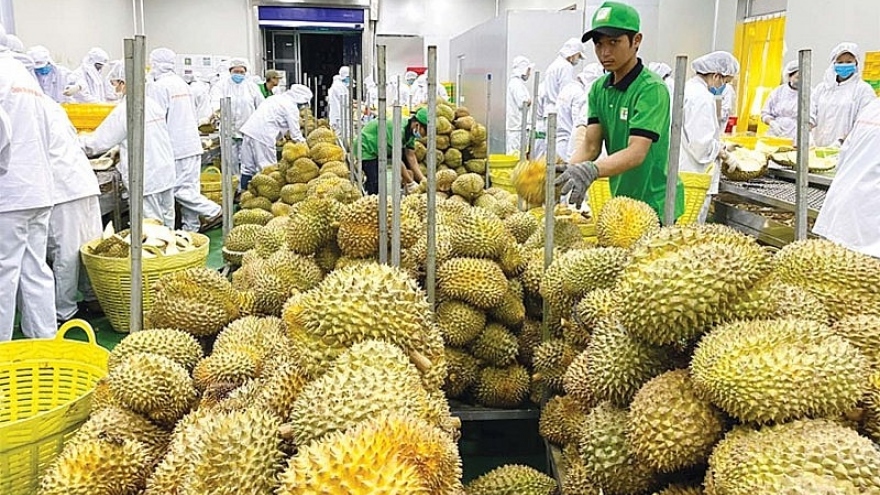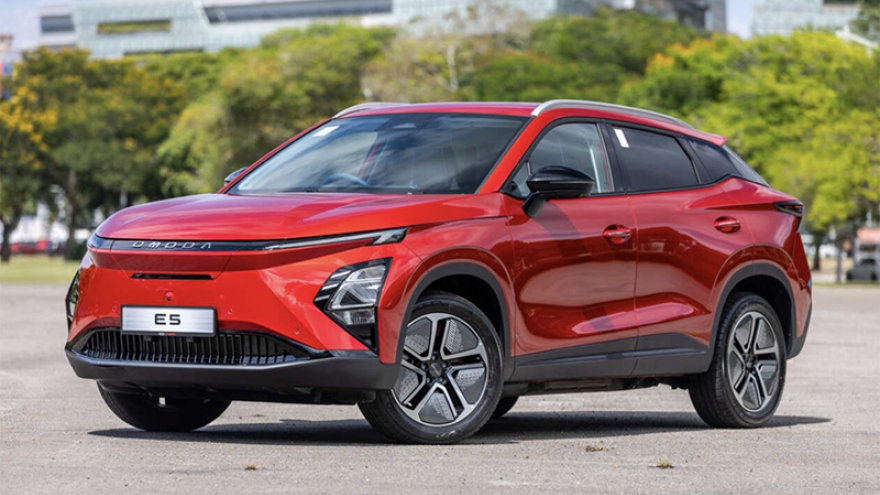Chinese investment into Vietnam on the upswing
VOV.VN - China is continuing to increase its investment into Vietnam as it strives to get the lion’s share of the dynamically developing economy.
Vietnam – an attractive investment destination

Executives of Goldwind International, one of the top three wind turbine manufacturers in the world, recently sounded out cooperation opportunities in Hai Phong, the largest port city in northern Vietnam.
During a working session on August 13 with leaders of the Hai Phong Economic Zone Authority, Si Zhong Wu, director of Goldwind International Southeast Asia, revealed the firm’s ambitious plan to build a high-tech wind turbine assembly and component manufacturing factory in Vietnam, and the Xuan Cau Industrial Park and Non-Tariff Zone in Hai Phong’s Lach Huyen international port area is one of the firm’s primary choices.
The previous week, leaders of Hai Phong awarded seven new registered and expanded investment certificates to Chinese investors with a total capital of nearly US$200 million at a Hai Phong Investment Promotion Conference held in China’s Shenzhen City. Chinese firms showed their interest in the fields of production of solar panels, electronic components, and auto parts processing, among others. The Hai Phong Economic Zone Authority also signed four memorandums of understanding with major Chinese investors at the event.
China has emerged as one of the five largest foreign investors in the Vietnamese market over the past five years. Statistics show that Singapore was the largest foreign investor in Vietnam in the past seven months, with total FDI capital reaching nearly US$6.52 billion, followed by Hong Kong (China), Japan, and China. However, China took the lead in terms of the number of new investment projects, accounting for nearly 30% of the overall figure.
Minister of Planning and Investment Nguyen Chi Dung points to the fact that Vietnam is attracting many Chinese corporations of international standing in the fields of technology, electricity - electronics, processing and manufacturing, infrastructure construction, renewable energy, and electric vehicles.
Chinese investment has been shifting to high-tech industries, components and spare parts manufacturing for electronics and automobiles industries, as well as green energy, as opposed to manufacturing and processing household wooden furniture, iron and steel, leather shoes, garments, food processing, and plastic packaging as previously.
Recently, Chinese-based display maker Beijing Oriental Electronics Group (BOE) invested in a smart terminal factory with a total capital of US$277.5 million in Phu My 3 Industrial Park of Ba Ria-Vung Tau province, specialising in assembling and manufacturing screens for computers, televisions, and circuit boards. In 2019, the group also put a factory in Dong Nai province into operation.
To date, many Chinese invested projects worth hundreds of millions of dollars, even up to billions of dollars such as Goertek, BYD, Radian, Brotex, Wingtech, Deli, and Trina Solar have been undertaken locally. In April, Chinese automaker Chery’s Omoda&Jaecoo and Vietnamese company Geleximco signed a joint venture agreement to construct a US$800 million automobile plant in Thai Binh province.
Huge potential for farm produce exports

Along with increasing investment capital, China is currently the largest market for Vietnamese agricultural products. Statistics indicate that two-way trade turnover between the two sides exceeded the US$100 billion mark for the first time in 2018 and hit US$171.2 billion last year, accounting for more than 25% of the country’s foreign trade.
Thanks to this huge market, 12 Vietnamese agricultural products, including lychee, rubber, and seafood, have joined the billion-US$ club of export items over recent years. According to the General Department of Customs, a number of Vietnamese agricultural products exported to this market have grown dramatically over the past years, with durian bringing back more than US$2.2 billion last year alone, an increase of five times compared to the previous year.
Dang Phuc Nguyen, general secretary of the Vietnam Fruit and Vegetables Association, says goods exported to this market enjoy many advantages due to cheap logistics costs and fast delivery times. In particular, Chinese consumers prefer many types of Vietnamese fruits. So far 11 types of Vietnamese fruits have been approved by Chinese authorities to officially enter their market, namely mango, dragon fruit, banana, longan, lychee, watermelon, rambutan, jackfruit, mangosteen, passion fruit, and durian.
Win-win approach
Prof. Dr. Nguyen Mai, chairman of Vietnam’s Association of Foreign Invested Enterprises, notes that trade relations between both sides are mutually complementary in terms of their import-export structure. Vietnam exports to China items such as phones, electronic components, coffee, rubber, as well as agricultural and aquatic products. In return, it imports machinery, raw materials, construction materials, shoes, and fabrics from the neighbour.
With regard to investment, Prof. Dr. Mai says Chinese capital pouring into the country is increasing because of the advantages from its domestic market. The Asian superpower continues to face difficulties due to trade competition from the United States. Its exports to both the US and European markets decreased significantly during and after the pandemic, especially in the high-tech sector. Meanwhile, Vietnam represents China’s neighbouring partner that has good economic and trade relationships with the world. In addition, preferential tariffs through multilateral and bilateral free trade agreements that Vietnam has signed make up a great advantage to export goods.
Investing in the Vietnamese market to link production and to create a closed supply chain in production and business is therefore a rational decision by Chinese businesses, says Prof. Dr. Mai, adding the country’s convenient geographical location, relatively cheap labour costs, low land rental costs, and diverse tax incentives represent attractive factors for Chinese investors.
In contrast, Vietnam benefits from having raw materials invested in local production and export as they enjoy added value. These are the main attractions of Vietnam to Chinese investors, according to analysis by the expert.



